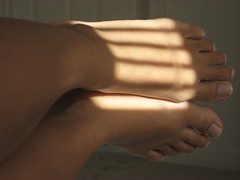 Why did I pick a pesky garden weed for a name?
Why did I pick a pesky garden weed for a name? I didn't pay much attention to dandelions until my 2 sons, ages 3 and 1 at the time, started picking them off my lawn and surprising me with bouquets of them. "Look, Mommy! I got flowers for you!"
At first the "gifts" reminded me of my poor neglected lawn, but after many many bright yellow bouquets from my boys each spring, dandelions became one of my favorite flowers.
So I'm trying to cultivate a small section in our backyard just for dandelions.
Is she crazy? Raising dandelions? Well if you had a kid who mourned the loss of "his garden" after daddy mowed it down and applied the chemicals, it's hard to explain that all this time he was giving his mommy "weeds" not really flowers.
So I'm going to raise dandelions in my backyard so I can have bouquets of yellow flowers everyday (ok, I'm being a bit selfish, I guess - I like getting flowers everyday!). No, really, I've grown to love them and through my children's eyes, I've found that dandelions are beautiful, send warm yellow sunshines and are magical. When the flower turns to seed, you can blow them off the stem, sending those little helicopters flying and you get your wish.
In Defense of DandelionsNow I know not everybody likes dandelions. Almost all kids love dandelions. I found out that there are other adults like me who like them just as much, so here are some things I found on the web, simply, in defense of dandelions:
"Fulghum, Washington, and Dandelions"
from p. 65-67 of All I Ever Need to Know I Learned in Kindergarten
by Robert Fulghum
Mr. Washington was a hard-core lawn freak. His yard an my yard blended together in an ambiguous fashion. Every year he was seized by a kind of herbicidal mania. He started fondling his weed-eater and mixing up vile potions in vats in his garage. It usually added up to trouble.
Sure enough, one morning I caught him over in my yard spraying dandelions.
"Didn't really think you'd mind," says he, righteously.
"Mind, mind!--you just killed my flowers," says I, with guarded contempt.
"Flowers?" he ripostes. "Those are weeds!" He points at my dandelions with utter disdain.
"Weeds," says I, "are plants growing where people don't want them. In other words," says I, "weeds are in the eye of the beholder. And as far as I am concerned, dandelions are not weeds--they are flowers!"
"Horse manure," says he, and stomps off home to avoid any taint of lunacy.
Now I happen to like dandelions a lot. They cover my yard each spring with fine yellow flowers, with no help from me at all. They mind their business and I mind mine. The young leaves make a spicy salad. The flowers add fine flavor and elegant color to a classic light wine. Toast the roots, grind and brew, and you have a palatable coffee. The tenderest shoots make a tonic tea. The dried mature leaves are high in iron, vitamins A and C, and make a good laxative. Bees favor dandelions, and the cooperative result is high-class honey.
Dandelions have been around for about thirty million years; there are fossils. The nearest relatives are lettuce and chicory. Formally classed as perennial herbs of the genus Taraxacum of the family aster-aceae. The name comes from the French for lion's tooth, dent de lion. Distributed all over Europe, Asia, and North America, they got there on their own. Resistant to disease, bugs, heat, cold, wind, rain, and human beings.
If dandelions were rare and fragile, people would knock themselves out to pay $14.95 a plant, raise them by hand in greenhouses, and form dandelion societies and all that. But they are everywhere and don't need us and kind of do what they please. So we call them "weeds," and murder them at every opportunity.
Well, I say they are flowers, by God, and pretty damn fine flowers at that. And I am honored to have them in my yard, where I want them. Besides, in addition to every other good thing about them, they are magic. When the flower turns to seed you can blow them off the stem, and if you blow just right and all those little helicopters fly away, you get your wish. Magic. Or if you are a lover, they twine nicely into a wreath for your friends hair.
"In Defense of the Dandelion"
by Samuel Pickering, Jr.
I have decided that the real American Beauty isn't the rose but the dandelion. The common dandelion is not a native American. Like most of our ancestors, it didn't travel first class, and there is no record of its arrival on our shores. All we know is that it seems to have come from Europe, and like those "huddled masses" who sought a better life in a newer world, the dandelion put down roots and thrived.
Grateful for the opportunity to settle, it was content to make wayside and wasteland bloom. Unlike the cultivated rose, the dandelion is, in its stem of stems, a Populist. It generally prefers hard homesteading on barren ground to pampered living in potting soil. The dandelion smiles just as brightly amid backyard tenement clutter as it does beneath the boxwood border of an English garden. In contrast to the formal rose, which makes a sticking point of ceremony and can be prickly with those who do not show proper deference, the dandelion is friendly. It even enjoys the company of children as they weave it into garlands.

The dandelion lives a clean and simple life. It opens and blooms at sunrise and, closing up tightly, goes to bed at sunset. It keeps healthy and respectable hours because it is a family flower. One hundred to 200 florets compose its yellow blossom. As the florets mature and are finally pollinated, the dandelion's stem lengthens. Sacrificing its position in the world, the dandelion now lives for its children, closing one last time until the florets have grown into seeds and are ready to leave home. Then the gray globe expands so the seeds can catch a breeze and start out well in life.
No other flower embodies the American spirit as well as the dandelion. When the going gets tough, pansies and petunias wilt. Neither the strong winds nor heavy rains can break the dandelion. When the petals of the dogwood blossoms are scattered and the peony is beaten to the ground, the dandelion still holds its head up bravely.
Unlike the southern Magnolia or sagebrush, the dandelion is not tied to a particular region of the country. It is truly a National flower. Moreover, it is a flower for all months and all climates; from January to December, the dandelion blossoms somewhere. It may be found in Arizona under the shadow of the saguaro cactus, in Florida's orange groves or on a ledge in Colorado's mountains.
Such a flower is a bright sign of hope, and when winter comes and days and nights seem black, remember that somewhere in America, the dandelion is blooming.
More About Dandelions!Interesting Historical Information:
The first mention of the dandelion as a medicine was in Chinese herbals around the 7th century. By the 10th and 11th centuries, Arabian physicians spoke of it as a sort of wild endive, under the name of Taraxacon. It was also mentioned in Welsh medicine of the 13th century. Dandelion was first spoken of in Europe around 1485. Its common name is attributed to a 15th century surgeon who compared the shape of the leaves to the teeth of a lion. Native Americans used dandelions for food, as an aid for dermatological and gastrointestinal problems, a cure for sore throats, as an analgesic, a sedative, a laxative, a love potion, and a general tonic for good health.
Folklore:
To find out how long you will live, blow the seeds off the head of a dandelion. You will live as many years as there are seeds left on the head.
To tell time: blow three times at the seed head. The number of seeds left is the hour.
Dandelion Recipes! (Note: I have not tried them (yet) so cannot guarantee that they're good)
Dandelion Salad
4 cups dandelion leaves
3 eggs
3 slices of bacon
Wash the leaves thoroughly and chop them into bite sized pieces. Boil the egg and fry the bacon. Chop the egg and crumble the bacon. Mix together and add dressing. Recipe below.
Dressing
1 1/2 Tbsp flour
1 tsp salt
1/4 cup vinegar
2 Tbsp sugar
2 cups water
Mix ingredients thoroughly then pour on salad. Enjoy!
Dandelion Jelly
4 cups yellow parts of dandelion blossoms
3 cups boiling water
4 1/2 cups sugar
2 Tbsp freshly squeezed lemon juice
1 pkg powdered pectin
Pull the yellow blossoms apart from the green parts. Get lots of blossoms. While you're collecting them you can freeze what you already have. Make sure there are no green parts since the green parts have a bitter flavor. Pack the blossoms into a 4 cup measure. More blossoms mean more flavor for the jelly. Bring the water to a boil and fill with blossom shreds. Simmer over gentle heat about 10 minutes. Pour the water and the blossoms through a strainer. Press blossoms as dry as possible to extract maximum amount of water. Add more blossoms and simmer for about 10 minutes. Continue simmering and straining until all the blossoms are used up. Add more water to make 3 cups. Strain the water very well using a coffee filter. Combine water with lemon juice, sugar, and pectin. Bring to a rolling boil and stir until sugar is dissolved. Boil hard for one minute. Skim. Pour into hot jars and seal.
Dandelion Wine
Yields about 1 gallon
1 gallon dandelion blossoms
1 gallon hot water
juice of 1 lemon
3 oranges peeled and sliced
4 lbs sugar
1 cake yeast
Combine water and blossoms in a crock. Let stand for 24 hours then strain. Add rest of ingredients. Let mixture set for 3 weeks then bottle. Age bottles for at least 2 months.

 Thirteen Things I've been craving in this pregnancy
Thirteen Things I've been craving in this pregnancy
 13.ice cream laced with anything fudge or chocolate
13.ice cream laced with anything fudge or chocolate





























